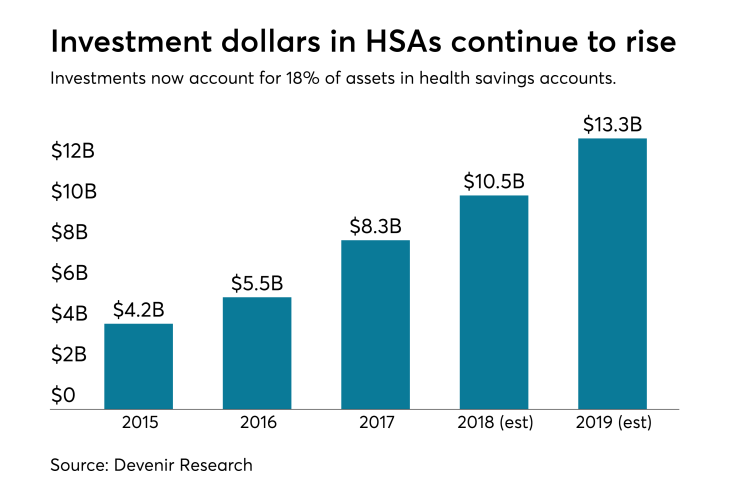Employees by and large are using their HSAs as spending accounts rather than as tax-free long-term savings accounts and many still do not understand how to take advantage of these plans, according to a new survey from Willis Towers Watson.
Almost two in three workers (65%) are tapping their HSAs to pay for immediate healthcare expenses with only a modest 8% saving the money for the future. About one in four (27%) use the money only when necessary and save the rest, the survey found.
As a result, less than half (45%) have more than $5,000 saved in their health account.
“We call these things health savings accounts but it was pretty stark how much they’re really used as spending accounts,” says David Speier, managing director of Benefits Accounts at Willis Towers Watson.
Almost half (45%) of the 2,155 employees surveyed opted not to enroll in their employers’ HSAs. Of those who did not enroll, 57% said they did not see any advantages to doing so and 24% said they did not have the money to contribute to it. One in 10 declined to participate because their employer did not contribute to the account.

More than half (55%) enrolled in employer HSAs, with 63% saying they put aside what they can afford each month.
With 401(k)s and flexible spending accounts competing for their attention, employees generally seemed to have trouble deciding where to put their money and how to optimize it, according to the findings. For example, only 22% of financially adept employees followed the recommended strategy of maximizing their 401(k) contributions up to their company’s match before contributing to their HSA. Slightly more (25%) knew to contribute to their HSA before their 401(k) if the 401(k) didn’t have a matching employer contribution, a strategy also recommended by financial experts.
Employees did not appear to be astute users of flexible spending accounts either. Those who opted for medical FSAs often left money on the table or scrambled to spend the funding before year-end. Almost one in three (32%) found it hard to spend all of the money in their account, while nearly half (48%) bemoaned not having enough money in it.
“This world of tax-efficient savings has gotten a whole lot more complex than what it was 15 to 20 years ago,” Speier says. “These decisions are just too much for people.”
Speier urged employers to help their workers improve their understanding of HSAs and to provide them with personalized online tools to help them decide whether to tap their HSA to pay for particular healthcare expenses or pay for them out-of-pocket.
These online tools for making “save versus spend” decisions might reside on the HSA account portal and include things like retirement savings calculators and healthcare price transparency services.
“The focus should be on tools to support decision-making more than education,” Speier says. “Education is nice but people are really looking to tools to make decisions.”
Since employees visit their HSA portal frequently — 38% view their account information monthly and 33% quarterly — employers have a good opportunity to catch their attention with the tools, he adds.
Speier also encouraged employers to offer HSA delivery platforms that are integrated with financial wellness programs.
Such integrated platforms can “help employees make strategic decisions on where best to save their money based on their unique financial situation,” he says. “They need these things to be very user-friendly.”





